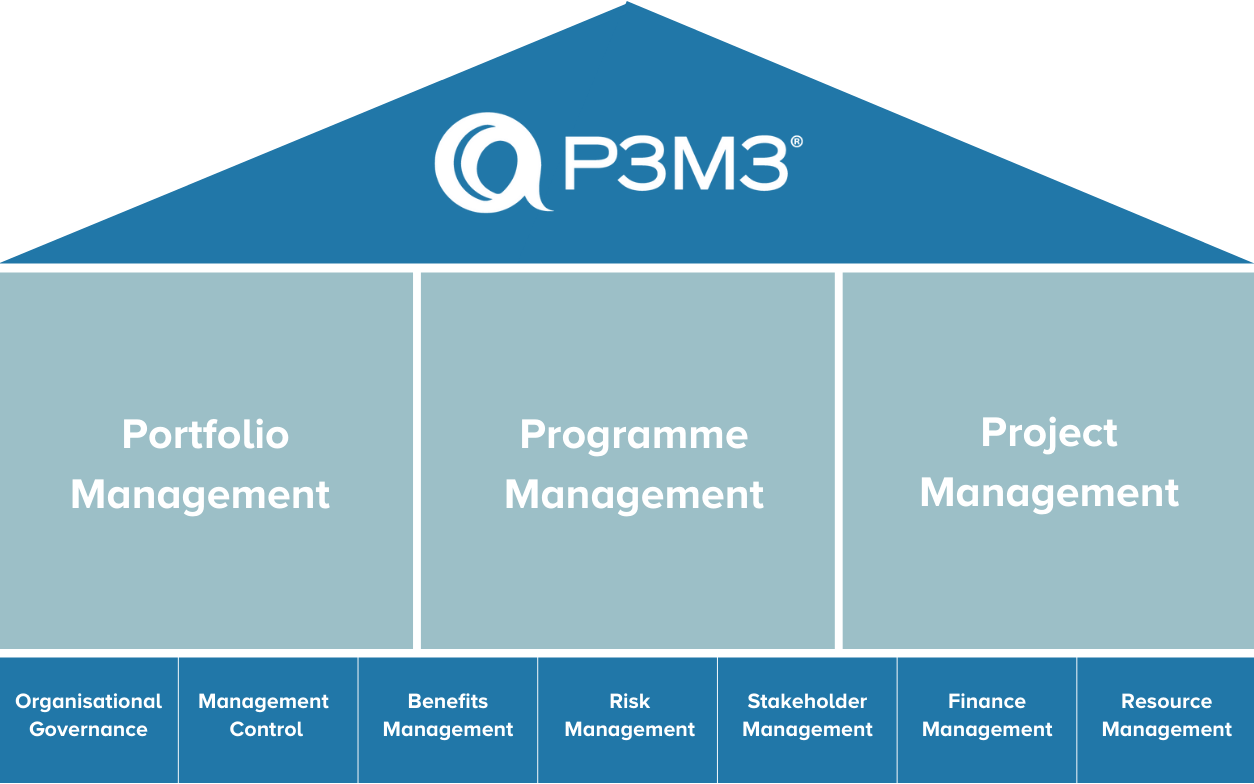

With increasing demand for project management in both the public and private sectors, developing capabilities and improving performance becomes essential to ensure project success and goal achievement. The P3M3 model provides a global framework for measuring process maturity in project, program, and portfolio management, allowing organisations to identify strengths and weaknesses and pinpoint areas needing improvement.
The role of the P3M3 model in developing change capabilities lies in providing a comprehensive framework for assessing process maturity in project, program, and portfolio management. Organisations can identify their maturity level and determine areas in need of development, including understanding processes and implementing necessary procedures.
For example, if an organisation is at level one of the P3M3 model (process awareness), it can enhance its understanding of project, program, and portfolio management processes and take specific, clear actions to improve performance.
Additionally, the P3M3 model helps prioritise development efforts, focusing resources on areas needing more improvement. By applying model recommendations and practices, project, program, and portfolio management efficiency and effectiveness can be enhanced, ultimately increasing the organisation’s ability to adapt to internal and external changes and succeed in its projects and programs.
The importance of the P3M3 model in developing change capabilities in the organisation can be seen through several aspects:
1. Maturity assessment:
The model helps assess management process maturity in the organisation, providing a better understanding of its readiness for change and identifying gaps and areas for improvement.
2. Prioritisation:
Following assessment, organisations can identify areas needing urgent development, thus prioritising improvement efforts.
3. Capacity development:
The model helps identify areas needing enhancement in project, program, and portfolio management capabilities, whether through process improvement or skills and knowledge enhancement.
4. Strategic guidance:
P3M3 assessments can guide the organisation’s strategy in project, program, and portfolio management, aiding in better achieving its strategic goals.
5. Enhancing effectiveness and efficiency:
By adopting P3M3 recommendations and practices, organisations can enhance their operational efficiency, improving their ability to adapt to changes and succeed in their projects and programs.
The impact of the P3M3 model on organisational success manifests in several aspects:
1.Performance and efficiency improvement: By analysing project, program, and portfolio management processes using the P3M3 model and identifying areas needing development, organisations can implement necessary improvements to increase efficiency and performance, leading to better results in their projects and programs.
2.Strategic alignment: By identifying priorities and directing efforts and resources toward areas needing more development, organisations can better achieve their strategic goals, thereby enhancing their success and growth.
3. Capacity and skill development:
Through identifying skill and capability gaps, organisations can better direct training and development efforts, raising efficiency levels and preparing to face future challenges.
4. Achieving strategic goals:
By linking project, program, and portfolio management to organisational strategic goals, organisations can achieve more distinguished and effective results in implementing their initiatives, enhancing their success and growth in the market.
Practical applications of the P3M3 model:
1. Improving internal processes:
P3M3 can be used to analyse internal processes for project, program, and portfolio management and identify areas needing improvement. For example, enhancing risk estimation processes to better identify and assess risks in future projects.
2. Guiding investments and resources:
By using P3M3, organisations can evaluate the return on investment in various projects, programs, and portfolios and better allocate resources toward high-priority initiatives contributing to strategic goals.
3. Capacity and skill development:
Based on P3M3 assessment results, organisations can identify skill and capability gaps for project, program, and portfolio management teams and direct training and development efforts appropriately.
4. Achieving strategic goals:
The P3M3 model can help organisations link project, program, and portfolio management to their strategic goals, ensuring the implementation of projects and programs that effectively contribute to achieving these goals.
5. Improving performance and quality:
By assessing project, program, and portfolio management maturity using P3M3, organisations can identify performance gaps and implement necessary improvements to achieve quality and effectiveness goals.
These practical applications demonstrate how the P3M3 model can be a valuable tool for improving project, program, and portfolio management in companies and organisations.
In summary, the P3M3 model contributes to developing change capabilities in the organisation by assessing and improving project, program, and portfolio management processes, guiding strategy toward achieving specific goals more effectively.
Using the P3M3 model in a technology firm to improve the management of a new application development project:
In a technology company working on developing a new application, the management decided to implement the P3M3 model to enhance project management and ensure achieving goals more effectively. The process began with assessing the current maturity level of project management processes using the P3M3 model, revealing that the organisation was at the “Continuous Improvement” level, indicating some gaps in processes. Based on the assessment results, the company took a series of improvement measures, including enhancing communication among team members, improving resource allocation processes, and implementing performance evaluation tools to monitor project progress. Thanks to the application of the P3M3 model and the improvement measures taken, the company significantly improved project management. Consequently, it succeeded in delivering the application within the specified deadline and budget, achieving results that exceeded customer expectations, thereby increasing their satisfaction and enhancing the company’s reputation in the market.
In the constantly evolving organisational environment and with the increasing complexity of projects, the P3M3 model remains a valuable tool for developing change capabilities in enterprises. With its ability to analyse processes and identify areas needing improvement, organisations can enhance their performance and achieve their goals more effectively in project, program, and portfolio management. Therefore, organisations should maximise their utilisation of the opportunities provided by this model for continuous growth and development.